vote
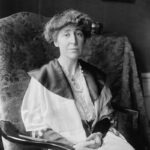 The 19th Amendment states that the right to vote “shall not be denied or abridged by the United States or by any State on account of sex.” In theory, this language guaranteed that all women in the United States could not be prevented from voting because of their gender. Of course, these days, no one really gives that a second thought, because…well, of course, women can vote. Who dared to think otherwise? Nevertheless, women were not always given the right to vote. In fact, for many years, men thought that politics was something that women could not possible begin to understand, and that it was a subject that was simply too harsh for the fragile female mind. Hahahaha!! We can laugh at such a thought now, because it is completely absurd, but that is what everyone thought back then…before the 19th Amendment was passed, following a fierce battle between the women suffragists and the men who ruled the nation.
The 19th Amendment states that the right to vote “shall not be denied or abridged by the United States or by any State on account of sex.” In theory, this language guaranteed that all women in the United States could not be prevented from voting because of their gender. Of course, these days, no one really gives that a second thought, because…well, of course, women can vote. Who dared to think otherwise? Nevertheless, women were not always given the right to vote. In fact, for many years, men thought that politics was something that women could not possible begin to understand, and that it was a subject that was simply too harsh for the fragile female mind. Hahahaha!! We can laugh at such a thought now, because it is completely absurd, but that is what everyone thought back then…before the 19th Amendment was passed, following a fierce battle between the women suffragists and the men who ruled the nation.
Nevertheless, in the midst of that fierce battle for the right to vote, an odd event took place in the form of the election of a US Congress member, Jeanette Rankin somehow being elected to Congress!! She was elected to 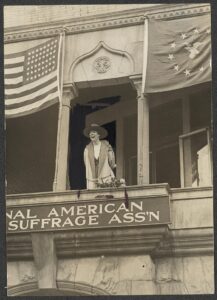 the US House of Representatives as a Republican from Montana in 1916, and again in 1940. Rankin was a woman, so how could this have possibly happened. She couldn’t even vote, and yet she won the election. That’s crazy. If her “fragile” mind could not be expected to understand how to vote for the office, how would she ever be able to function in the office. I mean, after all, she would be dealing with the same politics that her fellow members of congress had deemed her too fragile to understand. In fact, Jeanette Rankin would not be able to vote in an election until August 18, 1820. Her term in office ran from March 4, 1917 to March 3, 1919…during which time she was the only woman in the United States who could vote. Rankin would serve again from January 3, 1941 to January 3, 1943. Oddly, each of Rankin’s Congressional terms coincided with initiation of US military intervention in the two World Wars. A lifelong pacifist, she was one of 50 House members who opposed the declaration of war on Germany in 1917. In 1941, she was the only member of Congress to vote against the declaration of war on Japan following the attack on Pearl Harbor.
the US House of Representatives as a Republican from Montana in 1916, and again in 1940. Rankin was a woman, so how could this have possibly happened. She couldn’t even vote, and yet she won the election. That’s crazy. If her “fragile” mind could not be expected to understand how to vote for the office, how would she ever be able to function in the office. I mean, after all, she would be dealing with the same politics that her fellow members of congress had deemed her too fragile to understand. In fact, Jeanette Rankin would not be able to vote in an election until August 18, 1820. Her term in office ran from March 4, 1917 to March 3, 1919…during which time she was the only woman in the United States who could vote. Rankin would serve again from January 3, 1941 to January 3, 1943. Oddly, each of Rankin’s Congressional terms coincided with initiation of US military intervention in the two World Wars. A lifelong pacifist, she was one of 50 House members who opposed the declaration of war on Germany in 1917. In 1941, she was the only member of Congress to vote against the declaration of war on Japan following the attack on Pearl Harbor.
Jeanette Rankin was born on June 11, 1880, near Missoula in Montana Territory. Montana would not become a 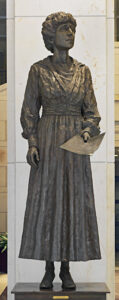 state for another nine years. Her parents were, schoolteacher Olive (née Pickering) and Scottish-Canadian immigrant John Rankin, a wealthy mill owner. She was the eldest of seven children, including five sisters (one of whom died in childhood), and a brother, Wellington, who became Montana’s attorney general, and later a Montana Supreme Court justice. One of her sisters, Edna Rankin McKinnon, became the first Montana-born woman to pass the bar exam in Montana and was an early social activist for access to birth control. With all that, it’s little wonder that she became a congresswoman. Apparently, politics ran in the family, and was likely an often-debated subject in the family home.
state for another nine years. Her parents were, schoolteacher Olive (née Pickering) and Scottish-Canadian immigrant John Rankin, a wealthy mill owner. She was the eldest of seven children, including five sisters (one of whom died in childhood), and a brother, Wellington, who became Montana’s attorney general, and later a Montana Supreme Court justice. One of her sisters, Edna Rankin McKinnon, became the first Montana-born woman to pass the bar exam in Montana and was an early social activist for access to birth control. With all that, it’s little wonder that she became a congresswoman. Apparently, politics ran in the family, and was likely an often-debated subject in the family home.
While Rankin was in her first term in office, it would seem to me that she must have felt a very strong sense of responsibility, because she was at that time the voice of all women…at least as it applied to government and politics. I can’t say that I would have agreed with all of her votes in office, especially where it applied to the two world wars, which I feel the United States needed to be involved in. Perhaps it is that aspect of being in office that the men didn’t think women were very well equipped to handle…war being such an emotional issue and all. I still think that there are many women who might struggle with the idea of sending our men into war, but then there are men who feel the same way, so I guess it is just a matter of where people stand concerning war. To date, Rankin remains the only woman ever elected to Congress from Montana.
 Every four years, Americans go to the polls to elect a new president. Looking at the first time that a president is elected, quite often, we know little about the person running for president. Even if they have been in Congress, it takes some digging to really discover who they are, and what they can do for our nation. We rely on things like the political party they belong to or the campaign promises they make. Still, we have no idea what the candidate will really do, until they are in office.
Every four years, Americans go to the polls to elect a new president. Looking at the first time that a president is elected, quite often, we know little about the person running for president. Even if they have been in Congress, it takes some digging to really discover who they are, and what they can do for our nation. We rely on things like the political party they belong to or the campaign promises they make. Still, we have no idea what the candidate will really do, until they are in office.
Sometimes, there are exceptions to that basic rule, however. Such was the case with Dwight D Eisenhower, who was the supreme commander of Allied forces in Western Europe during World War II. Of course, running a nation is not the same as running a war, unless the nation happens to be at war, that is. Nevertheless, a commander who excelled at leading a war, was by definition, a leader…making it a good bet that he could also lead a nation. Eisenhower was that kind of leader, and the people of the United States could see it clearly. He led the massive invasion of Nazi-occupied Europe that began on D-Day…June 6, 1944. Then in 1952, with victory under his belt, leading Republicans convinced Eisenhower, who by then was in command of NATO forces in Europe, to run for president. As the campaign progressed, it would remain to be seen, just how much the people of the United States thought that he would make a good leader for the nation. The election would be the telling point.
And so it went. Eisenhower won a convincing victory over Democrat Adlai Stevenson and would serve two terms in the White House (1953-1961). Even more amazing than his victory was the fact that General Dwight D Eisenhower won the American presidential elections with the largest number of popular votes ever recorded for a presidential candidate. It was a landslide victory. The people had spoken. Also of note, is that Eisenhower was the only other president to win the presidential election, having never served in any other political office. I’m sure everyone knows that the other president to do that is our current president…Donald Trump. That is an almost unheard of feat. A general and a businessman, both of whom had not been politically inclined, and yet, here they were. During his presidency, Eisenhower managed Cold War-era tensions with the Soviet Union under the looming threat of nuclear weapons, ended the war in Korea in 1953 and authorized a number of covert anti-communist operations by the CIA around the world. Here at home, America was in a period of relative prosperity, nevertheless, Eisenhower strengthened Social Security and created the massive new Interstate Highway System. Eisenhower was so well liked that he would beat Stevenson again four years later in a landslide to win re-election, despite health concerns after suffering a heart attack in 1955.
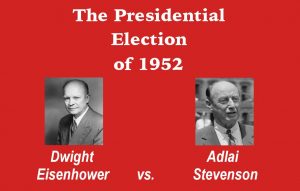
Eisenhower was born in Denison, Texas, on October 14, 1890. He grew up in Abilene, Kansas, as the third of seven sons in a poor family. His mother, a devout Mennonite and pacifist, was quite distressed when young Ike…as he was known…won an appointment to the US Military Academy at West Point, New York. Nevertheless, he went on to graduate in the middle of his class in 1915. While stationed as a second lieutenant in San Antonio, Texas, Eisenhower met Mamie Geneva Doud. The couple married in 1916 and had two sons, Doud Dwight, who died of scarlet fever as a small child, and John. World War I ended just before Eisenhower was scheduled to go to Europe, which was frustrating to the young officer, but he soon managed to acquire an appointment to the Command and General Staff College at Fort Leavenworth, Kansas. Graduating first in his class of 245, he served as a military aide to General John J Pershing, commander of US forces during World War I, and later to General Douglas MacArthur, US Army chief of staff. During his seven years serving under MacArthur, Eisenhower was stationed in the Philippines from 1935 to 1939.
Eisenhower returned soon after Nazi Germany’s invasion of Poland sparked the outbreak of World War II in Europe. In September 1941, he received his first general’s star with a promotion to brigadier general. After Japan attacked Pearl Harbor that December, US Army Chief of Staff General George C Marshall called Eisenhower to Washington, DC to work as a planning officer. Beginning in November 1942, Eisenhower headed Operation Torch, the successful Allied invasion of North Africa. He then directed the amphibious invasion of Sicily and the Italian mainland in 1943 that led to the fall of Rome in June 1944. In early 1943, he was made a full general. Eisenhower was appointed supreme commander of the Allied Expeditionary Force in December of that year and given the responsibility of spearheading the planned Allied invasion of Nazi-occupied Europe. On D-Day…June 6, 1944, more than 150,000 Allied forces crossed the English Channel and stormed the beaches of Normandy. The invasion led to the liberation of Paris on August 25 and turned the tide of the war in Europe decisively in the Allied direction. Having risen from lieutenant colonel in the Philippines to supreme commander of the victorious forces in Europe in only five years, Eisenhower returned home to a hero’s welcome in 1945 to serve as chief of staff of the US Army.
In 1948, Eisenhower left active duty and became president of New York City’s Columbia University. His brief 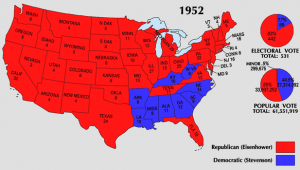 return to civilian life ended in 1950, however, when President Harry S Truman asked him to take command of the new North Atlantic Treaty Organization (NATO) forces in Europe. In that position, Eisenhower worked to create a unified military organization that would combat potential communist aggression around the globe. As President of the United States, while weathering criticism from both left and right, Eisenhower enjoyed high approval ratings throughout his administration. After leaving office in January 1961, he retired to his farm in Gettysburg, Pennsylvania. He worked largely on his memoirs, and would publish several books over the following years. He died on March 28, 1969, after a long illness.
return to civilian life ended in 1950, however, when President Harry S Truman asked him to take command of the new North Atlantic Treaty Organization (NATO) forces in Europe. In that position, Eisenhower worked to create a unified military organization that would combat potential communist aggression around the globe. As President of the United States, while weathering criticism from both left and right, Eisenhower enjoyed high approval ratings throughout his administration. After leaving office in January 1961, he retired to his farm in Gettysburg, Pennsylvania. He worked largely on his memoirs, and would publish several books over the following years. He died on March 28, 1969, after a long illness.
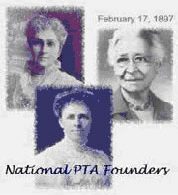 For much of my grandsons, Chris and Josh Petersen’s elementary school years at Pineview Elementary School, my daughter, Corrie Petersen was a member of and finally President of the Pineview Order of Parents and Instructors (POPI), which was basically Pineview Elementary School’s Parent Teacher Association (PTA). It was a big, and often thankless job, and I was always proud of the way she handled it. We have all heard of the PTA, but I never really knew how it got started. It actually has a very interesting history. Of course, when the schools in our country began, there was no real program that connected parents and teachers. I suppose that since many of these schools were small country schools, everyone knew the teachers anyway. As time went on, parents and especially moms, who were mostly stay-at-home moms in those days began to take an interest in what was being taught. The biggest problem they faced was that for many years, women couldn’t vote. Their voices were not heard in these matters.
For much of my grandsons, Chris and Josh Petersen’s elementary school years at Pineview Elementary School, my daughter, Corrie Petersen was a member of and finally President of the Pineview Order of Parents and Instructors (POPI), which was basically Pineview Elementary School’s Parent Teacher Association (PTA). It was a big, and often thankless job, and I was always proud of the way she handled it. We have all heard of the PTA, but I never really knew how it got started. It actually has a very interesting history. Of course, when the schools in our country began, there was no real program that connected parents and teachers. I suppose that since many of these schools were small country schools, everyone knew the teachers anyway. As time went on, parents and especially moms, who were mostly stay-at-home moms in those days began to take an interest in what was being taught. The biggest problem they faced was that for many years, women couldn’t vote. Their voices were not heard in these matters.
In the late 1800s women still weren’t allowed to vote in elections, and so it would seem that they wouldn’t be able to wield the political power needed to bring about change in the education system. The conventional wisdom of the time was soon to be challenged, however, by two women who first founded National PTA’s predecessor, the National Congress of Mothers. On February 17, 1897, the two founders, Alice McLellan Birney and Phoebe Apperson Hearst, looked out at the 2,000 people from across the country who gathered for the Mothers Congress’ first meeting in Washington DC. It was the beginning of the largest…and now oldest volunteer organization that works exclusively on behalf of children and youth. Sadly, this is a group of people who had even fewer rights at the time than women. In 1919, Selena Sloan Butler dedicated her life to forming an organization which would have the same objectives as the National Congress of Parents and Teachers. She formed the Yonge Street Parent-Teacher Association, which was the first unit of the Georgia Congress of Colored Parents  and Teachers (the precursor of the National Congress of Colored Parents and Teachers). In 1970, when the two groups united to form the National PTA, and the three women were recognized as co-founders.
and Teachers (the precursor of the National Congress of Colored Parents and Teachers). In 1970, when the two groups united to form the National PTA, and the three women were recognized as co-founders.
As the years went by, more women became working moms, and in many ways, the PTA, and the children, have suffered for it. That is why my daughter, who was a working mom too, ended up having to do so much of the work herself. That used to make me angry, but sometimes, you just have to get over things. Corrie’s time in the PTA, like her children’s years in elementary school would come to a close, and someone else would have to step up to the plate, but I know that Corrie will never regret the decision she made to head up the PTA (POPI) at Pineview Elementary School, and I know that I am very proud of her for taking the reigns and getting it done for the kids. Today is the 120th anniversary of this great organization.
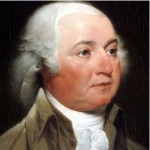 Before women could vote, the first lady in our White House was primarily there to handle the household staff, entertainment, and just look pretty beside her husband…the President. Of course, this was during the age when it was thought that women simply couldn’t handle the serious political information that it took to run a country. These days, women would howl in protest at the thought of being placed in the pretty, but incapable box. In reality, the women back then didn’t like it much either, but it seemed that there was nothing they could do about it…at least, not at the time. Still, even though women were not allowed to vote or have a political voice, there were men who valued the opinions and insights of their wives. One of those men was President John Adams. I suppose that Abigail Adams could have had one of those amazing minds, and that would seem to be the case from the different topics of discussion between John Adams and his wife, but the sequence of events that took place on this day March 7, 1777, is nothing short of amazing.
Before women could vote, the first lady in our White House was primarily there to handle the household staff, entertainment, and just look pretty beside her husband…the President. Of course, this was during the age when it was thought that women simply couldn’t handle the serious political information that it took to run a country. These days, women would howl in protest at the thought of being placed in the pretty, but incapable box. In reality, the women back then didn’t like it much either, but it seemed that there was nothing they could do about it…at least, not at the time. Still, even though women were not allowed to vote or have a political voice, there were men who valued the opinions and insights of their wives. One of those men was President John Adams. I suppose that Abigail Adams could have had one of those amazing minds, and that would seem to be the case from the different topics of discussion between John Adams and his wife, but the sequence of events that took place on this day March 7, 1777, is nothing short of amazing.
While John, who was at the time, a Continental Congressman, was in Philadelphia with the Continental Congress, and Abigail was in Braintree, Massachusetts at the family farm, he wrote her three letters, and received two letters that she had written in February. The correspondence between the two, was quite remarkable, and in all numbered 1,160 letters. They covered topics ranging from politics to military strategy, and from household economy to family health. John could see the value of his wife’s mind in all his life’s work, but probably the most in his presidency…other than family, that is. In many ways, it is sad to think that the minds of so many amazing women have gone untapped when it comes to the political arena. Of course, not all minds, male or female, intelligent or not so intelligent, can be said to have a good grasp of the important things necessary to run a nation, and keep it from derailing…as we have seen in recent years. Our nation needs people who understand how a Constitutional Republic works…and sadly, many don’t. But John Adams knew how important our Constitution was and always would be…as did his wife, Abigail. John was probably on the forefront of modern thought, in that he saw in his wife the ability to think politically, militarily, economically, as well as all of the thoughts any wife and mother has for her family. John and Abigail were not alone either. They were among the few people of that time, who saw women as intellectual and emotional equals.
In his letter, John mentioned that he felt saddened by the move of the capital to Baltimore, saying “This City is a dull Place, in Comparason [sic] of what it was. More than one half the Inhabitants have removed to the Country, as it was their Wisdom to do—the Remainder are chiefly Quakers as dull as Beetles. From these neither good is to be expected nor Evil to be apprehended. They are a kind of neutral Tribe, or the Race of the insipids. By contrast, Adams described the Loyalists, who prepared their Minds and Bodies, Houses and Cellars,  to receive General William Howe should he attack, as a Pack of sordid Scoundrels male and female.” Abigail had written the letters he received on this day, in February, in which she spoke of the difficulty of corresponding during war, but also spoke of the lack of military fervor demonstrated by the New Englanders around her. I’m sure there was a weariness among the people. She wrote that she awaited greater patriotism, greater prosperity and future correspondence from her beloved husband to his devoted Portia, a nickname John had give her likely in reference to the intelligent and devoted heroine of Shakespeare’s Portia in The Merchant of Venice. These words and the respect her husband had for his wife and her mind were very unusual in a time when women were placed in the pretty, but incapable box.
to receive General William Howe should he attack, as a Pack of sordid Scoundrels male and female.” Abigail had written the letters he received on this day, in February, in which she spoke of the difficulty of corresponding during war, but also spoke of the lack of military fervor demonstrated by the New Englanders around her. I’m sure there was a weariness among the people. She wrote that she awaited greater patriotism, greater prosperity and future correspondence from her beloved husband to his devoted Portia, a nickname John had give her likely in reference to the intelligent and devoted heroine of Shakespeare’s Portia in The Merchant of Venice. These words and the respect her husband had for his wife and her mind were very unusual in a time when women were placed in the pretty, but incapable box.
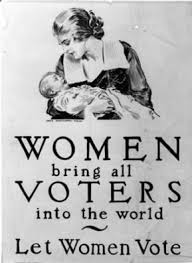 I’m sure that most people who are from Wyoming have heard it said that Wyoming is about 20 years behind the times. I suppose that in some ways we are, and I don’t think that is always a bad thing. If we are twenty years behind everyone else on crime, for instance, I’m happy. I’ll admit that for anyone who is looking for the latest styles or latest gadget…well, it can take a little longer to get to Wyoming. Nevertheless, Wyoming hasn’t always been 20 years behind the times. In fact, on this day, December 10, 1869, Wyoming stepped out ahead of the pack, when the Wyoming territorial legislators passed a bill that was signed into law, giving women the right to vote.
I’m sure that most people who are from Wyoming have heard it said that Wyoming is about 20 years behind the times. I suppose that in some ways we are, and I don’t think that is always a bad thing. If we are twenty years behind everyone else on crime, for instance, I’m happy. I’ll admit that for anyone who is looking for the latest styles or latest gadget…well, it can take a little longer to get to Wyoming. Nevertheless, Wyoming hasn’t always been 20 years behind the times. In fact, on this day, December 10, 1869, Wyoming stepped out ahead of the pack, when the Wyoming territorial legislators passed a bill that was signed into law, giving women the right to vote.
Many people have speculated that the legislators did not have the best motives for passing the piece of legislation. People speculated that while everyone knew the importance women played in the settlement of the west, they felt that it was really to bolster the strength of the conservative voters. Others will tell you that it was done because the 6,000 adult men were lonely. By making it legal for women to vote, they hoped it would bring in more women, because the 1,000 women in the territory was not a good number when it came to courting. They hoped that the right to vote would be a big draw to women who wanted equal rights.
I can’t say for sure what the real reason was to pass the legislation, but if you ask me, Wyoming was ahead of its time for once. Another group of people who wanted women’s rights wanted it simply because it was the right thing to do. William Bright, who was one of the territorial legislators, who was in his mid-forties, and had a very persuasive wife, was convinced by his wife that denying women the right to vote, was a gross injustice. The other major backer, Edward M. Lee, the territorial secretary who had championed the cause for years,  argued that it was unfair for his mother to be denied a privilege granted to African American males. I’m not sure if he should have used that analogy exactly, but the truth is that he was right. If one citizen is allowed to vote, then all citizens who are of age should be allowed to vote.
argued that it was unfair for his mother to be denied a privilege granted to African American males. I’m not sure if he should have used that analogy exactly, but the truth is that he was right. If one citizen is allowed to vote, then all citizens who are of age should be allowed to vote.
I don’t really think that the reasons behind the move to give women the right to vote matter so much as the fact that it happened. I don’t believe in one citizen having for rights, and others who should really have that right too, but are denied. Maybe Wyoming is behind the times in many ways, but is some of the most important ways, they are ahead of their time.

